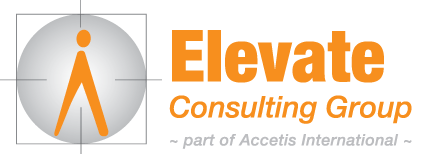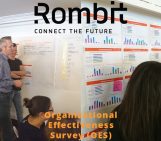
This year on the 1st of July we celebrate Elevates 15th Anniversary. It has been a quite interesting journey looking at it from both a business perspective but also from a financial perspective (market volatility). What we know for sure though is that it has also been 15 years of fun and professional development. Something we would have never been successful at if we wouldn’t have had the trust of our loyal clients. Obviously this journey has meant changing and developing in the sense of adjusting and adapting to the needs of our clients. But now, stronger than ever we feel it is time for the next phase of Elevate.
We want to further develop and change the focus of our services. Obviously because the market for HR consultancy is changing, the needs of our clients are changing but moreover we want to keep learning and developing ourselves. So 2016 and 2017 so far have been focused on building on the capacities and competencies of our team, creating and launching our new website which reflects our shift in activities and investing in the development of new products and new services. Exciting times in which we are and will be challenged by ourselves but also by the clients!
When developing new products and services, “testing” them on the Elevate team is part of the job. And as you know self-reflection can be quite scary and confronting. But hey, we recommend this to you all the time. So let’s go! This series of blogs will provide you with more info about our product / service focusing on organizational culture.
ORGANISATIONAL CULTURE
Most people have heard about the work that Geert Hofstede has done about Cultures. He has developed a model in which culture can be defined using a number of dimensions. His work focusses mainly on differences between countries and is very interesting if you work within an international environment and when you deal with people with different cultural backgrounds. It really helps you to understand why people have different expectations and why you might experience communication problems.
Our partner RedPill has developed the tool that we have adopted. This tool is built on the work of Hofstede as well as on the work of Minkov and Lanzer. All three experts were severely consulted during the developmental phase. The objective of the tool is to “measure” organizational culture and make it tangible. The basic assumption is that culture should enable strategy. If it doesn’t it will be really difficult to achieve the objectives related to the strategy. An important part of the process therefore is that you (the board or management team) defines the current culture and desired culture (based on strategy and ambitions). This analysis helps in translating (something relatively intangible like) culture into practices and leadership behaviors. We were trained in using the tool with different nationalities in the group. It immediately showed differences between the Dutch, the Polish, the French, Scandinavians and the Brits.
-I so much wanted to insert a “funny” cartoon about cultural differences. But have learned that most of them won’t be a sign of cultural awareness. Just a day-to-day example that shows how difficult this topic can be. –
So why would you want to “measure” culture?
Actually this has a lot to do with our vision on individual development; in order to develop yourself you need to be able to self-reflect, have self-confidence and be able to self-manage yourself. It is not very much different from organizational culture and organizational development. In order to develop the organization we need not only understand the business model, strategy and the people working in it. We also need to understand the culture.
Measuring culture….
- Makes it tangible so you can understand it. Culture is learned and at a very early age. Understanding culture (with a basis in where you are born and where you grew up) it is easier to understand behaviour and decision making processes.
- Helps you reflect on your current organizational culture and the culture you feel is required to meet your strategic objectives. This is where organizational culture links to strategy. It should enable you as opposed to inhibit you. This specifically is the purpose of StrategyQ™. Which I will explain in part 2 of these blogs on Organizational Culture.
- Enables you to use culture from a branding perspective. Use it to attract the right candidates to your company. For the candidate an asset to know what they are up to. And for a recruiter and or hiring manager an important source of information. This specifically is the purpose of CultureFitQ™. Which I will explain more about in the blog series part 3.
So stay put for my next blog. Specifically focusing on the link between Culture and Strategy. Also sharing with you about Elevates culture and needs for growth. If you sign up for What’s new you will automatically be notified. If you cannot wait to learn more, please contact us.




